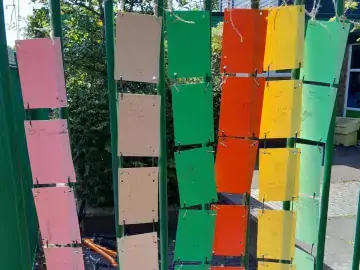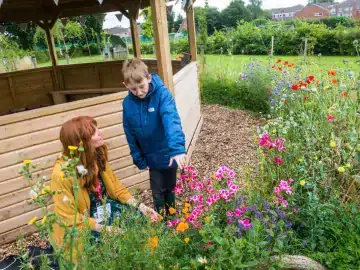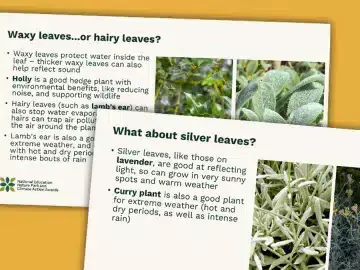
Points of view
This activity encourages learners to assess and experience the outdoors from the perspective of wildlife, to encourage thoughtful reflection on what they can observe, and the opportunities or barriers their local environment might present for nature. This activity requires learners to observe and notice details about their environment, as well as develop empathy for other living things.
This activity works best if it can be delivered outside – but it can be completed back in the classroom after going outside to explore the site. Why not take photographs or notes while outside of what the space is like, to help with the following activity?
Preparation
What you need
- Points of view worksheets
- Pencils
- Clipboards (if working outside), one per group/pair
- Optional: Kneeling mats, or tarpaulin or bags to sit on
Location
Outdoors or inside
Useful guidance
Resources
Step by step
- Ask learners, in small groups or pairs, to choose an area of the learning site to focus on, that you may have already explored. This could be the school field, playground, woodland area, or any area that is often overlooked.
- Assign each group or pair a wildlife worksheet – bird, bumblebee or spider. This will be the animal’s perspective they will be assessing their environment through.
- Encourage learners to imagine they are that living thing and prepare them for the activity – are you big, or small? Are you close to the ground, or up high? What do you know about this animal already? What do you like to do?
- If possible, take your group outside to complete the activity, responding to each prompt on the worksheet in their pairs/groups.
- After 10-15 minutes, bring the group back together. Invite sharing and discussion of what children and young people imagined different living things would experience, like or dislike about their space.
- To wrap up, help learners to understand the next steps from this activity by posing the question: What could we change to make this area better for bees/birds/spiders? Or, why would we want to encourage more bees/birds/spiders in our site?
Reflection
How did it make you think differently about our site when you were pretending to be a bee? What could we do differently to share our site with these animals, so that we can all enjoy the space?
Curriculum links
This activity can be used to support curriculum knowledge and skill development in science, citizenship and English, alongside enhancing nature education, with age and skill appropriate adaptations.
What to try next

Biodiversity bar charts
Begin activity
3 Ways to...Share your Findings
Begin activity